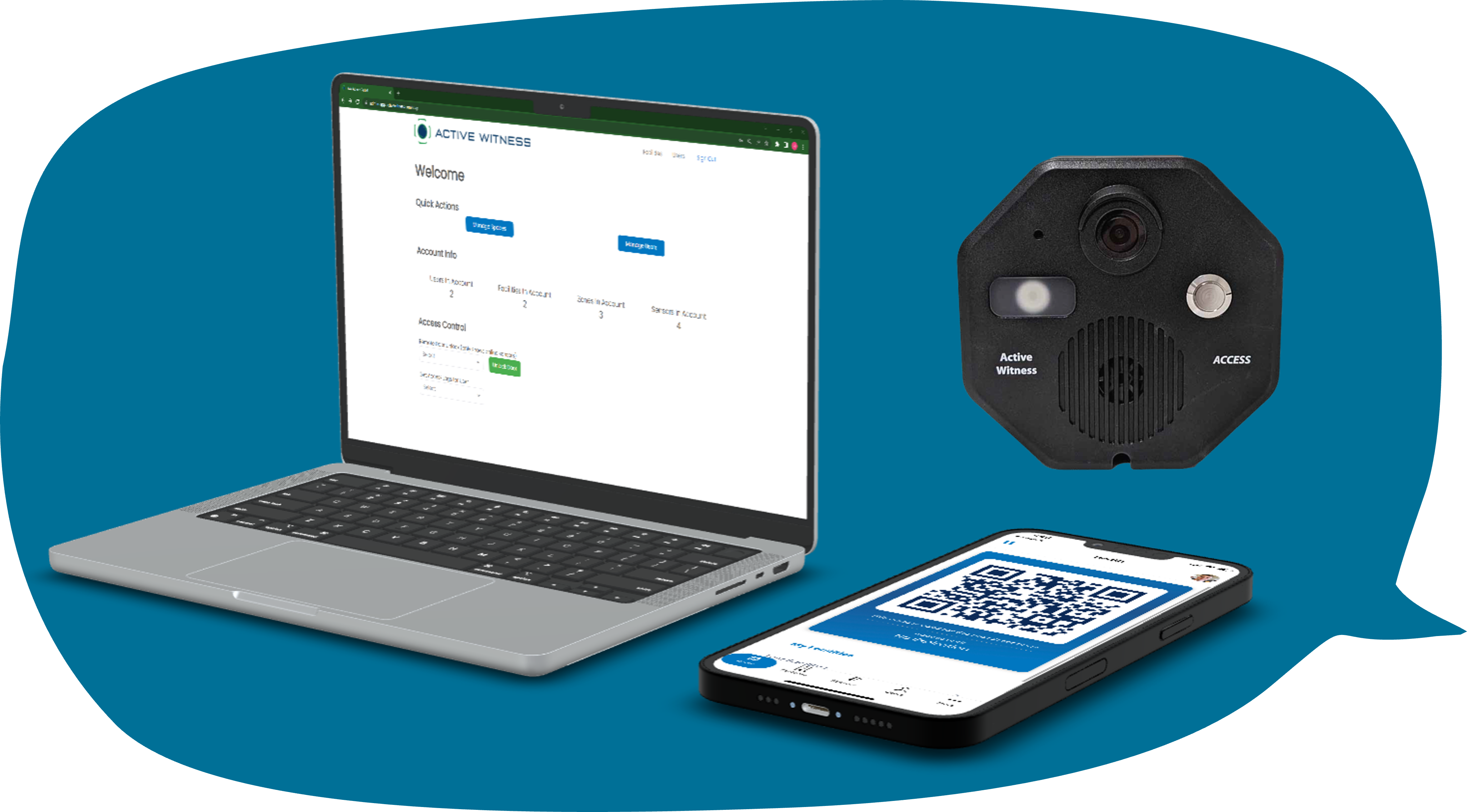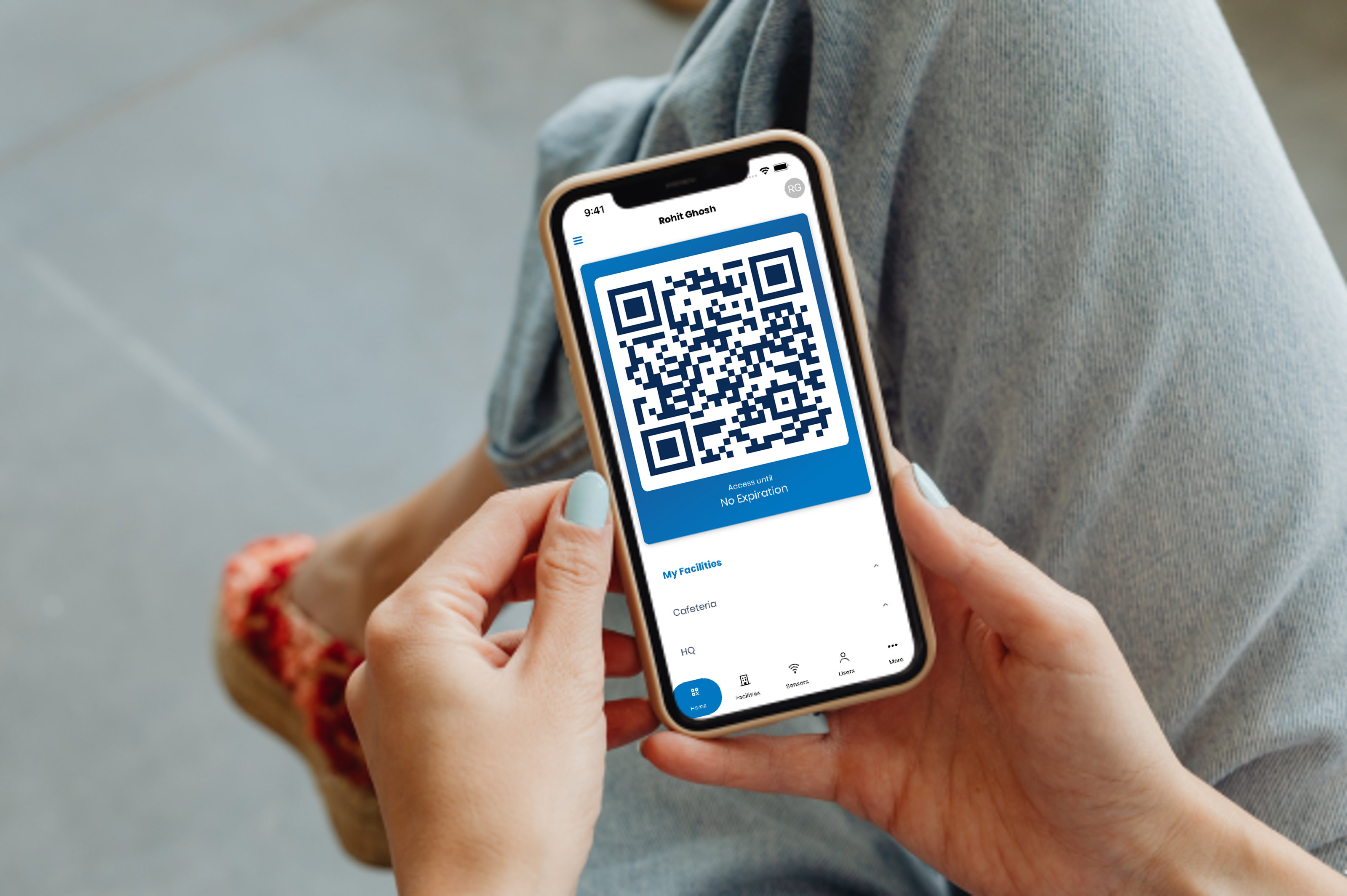
How do Keyless Access Control Systems and Mobile Credentials Work?
Introduction
If you run a business or organization that needs keyless access control, you'll need to gain entry with the right credentials.
These days, that means ditching your old keycards and embracing 21st-century technology. Depending on how advanced your system is (and how tech-savvy your users are) you can use QR-codes, Bluetooth Low Energy (BLE) technology, Near Field Communication (NFC) readers, or a combination of all three! See how exactly do mobile credentials work?
Let's get into it.
Keyless access control systems are extremely useful to secure your facility or business premise. Why is that?
Keyless credentials are more secure than traditional keycards because they use encryption technology that protects data from theft by hackers. This makes them ideal for keeping important information and property safe in environments where security is of paramount importance, such as offices, healthcare, and industrial settings.
In contrast to traditional keycard-based solutions that don't work so well when your employees want to give temporary access to delivery people, guests, or cleaners, either.
As well as being more secure, keyless credentials are also more convenient than traditional keys because they don’t require physical possession and can be issued (or revoked) to anyone, from anywhere, at any time.
What are keyless access control systems?
Most legacy access control systems utilize keycard-based solutions. The most common types of credentials for these are proximity cards.
Keyless access control systems however use mobile devices that leverage either QR codes, Bluetooth Low Energy (BLE), or Near Field Communication (NFC).
For many years, keycards have been used as a secure way to restrict access in organizations and businesses. But they're not perfect - they're easy to lose and can be copied without the owner realizing it.
And for a variety of reasons, including security and convenience, solutions that utilize mobile credentials have become one of the fastest-growing segments in physical security for businesses.
But how does a business select the best access solution for their facilities? The first step is understanding what different types there are and how they work.
What are the different types of mobile credentials?
Keyless access control systems include the use of; QR-codes, Bluetooth Low Energy (BLE) technology, and Near Field Communication (NFC) readers, paired with cloud-based software. That's because they can be controlled remotely via a cloud-enabled app on a smartphone or computer.
In a previous blog, we covered the benefits of mobile credentials. If you're interested in HOW they work, read on.
How do QR code credentials work?
QR code credentials are one of the most popular options for employees. They're simple to use and can be displayed on a mobile device OR can be printed on a variety of materials, from paper to plastic cards.
Here's how it works in Access Control: You'll obtain your QR code on your phone (or printed badge) using an app like Active Witness. When you want access to a building, you display your randomly generated QR code to the reader (in our case, Sima), and voila - you're in. The reader reads the information stored within your QR code and unlocks the electrified strike corresponding to the door that it is assigned to without needing any physical key or card.
What are the benefits of QR codes?
- Simple setup - they're easy to set up with existing technology and they don't require any extra equipment -- just download an app!
- Versatility - unlike BLE or NFC, a smartphone is not required as QR codes can be printed onto physical badges. In some settings users may not have a smartphone or an employer may prohibit their use of devices in a facility, making QR codes the perfect alternative.
- Basic requirements - There are no technical requirements or special hardware needed to use them.
QR-code credentials can be used in many industries including healthcare, retail, hospitality, transportation, and more.
What are the drawbacks of QR codes?
- Friction - QR codes require users to pull out their phone and interact with the device which provides slightly more friction than BLE or NFC. However, this is a benefit to security as you know the user attempting to enter the facility is the user in possession of the credential, not someone nearby attempting to sneak in.
If you're interested in how Active Witness QR-Code mobile credentials work, you can book a demo here.

How does a BLE credential work?
Bluetooth Low Energy (BLE) is a wireless technology designed to use less energy and operate in devices that are always on. In the case of access credentials, this means that you don't have to constantly re-authenticate your smartphone or card as you move around the building.
The way it works: your Bluetooth low energy access credential sends out a signal every second or so, which is picked up by your phone. Your phone then sends back an encrypted packet containing information about what floor or area you're currently in, and if it's been granted access by the system administrator for that area.
If everything goes smoothly, the door will open—but if there's any kind of problem with the connection between your card/phone and door lock system, such as interference from other electronic devices around it (such as microwave ovens), then nothing happens at all!
What are the top benefits of BLE mobile credentials?
- Low Friction - BLE enables users to enter a facility without presenting their device to a reader. As long as it works this is generally seen as one of the most convenient forms of mobile credentials as the required proximity to the reader is further than what is required by most NFC/QR credentials.
What are the worst drawbacks of BLE mobile credentials?
- Battery life - BLE can sometimes result in poor battery life of your mobile device depending on the system and device you are using.
- Security - Given the user doesn't have to interact with the reader, this could be exploited by attackers looking to take advantage of nearby users to enter an access point they are not permitted to enter.
How does an NFC credential work?
Near Field Communication (NFC) is a wireless communication technology that enables the exchange of data between two devices nearby. This can be achieved by bringing the devices to a distance of less than 10 cm, or about 4 inches.
This is the same technology that enables your iPhone to interact with point-of-sale systems (Apple Pay).
In a keyless access control system, it's used to communicate between readers and tags. Tags have an embedded chip that stores information such as access credentials and are programmed to communicate with NFC readers when they're brought close enough together. The reader then reads this information from the tag before allowing entry or unlocking doors automatically based on your credentials stored thereon.
What are the top benefits of BLE mobile credentials?
- User Familiarity - NFC technology is widely adopted and many already use it with Apple Pay, transit passes, etc.
What are the worst drawbacks of BLE mobile credentials?
- Range - NFC has a lower range than BLE and RFID technology.
- Friction - Similar to QR code credentials users typically have to open up their mobile app to enable the NFC to interact with the reader which adds friction to the user experience. Again, while this is slightly less convenient, it is a layer of security that forces participation from the user with the credential.
Conclusion
Anytime a business owner or facility operator is considering upgrading their existing access control system, one must consider the pros and cons of each technology. There are many reasons that mobile credentials and keyless access control systems are growing so fast, including security, convenience, remote management, rapid deployment, less system administration, and more.
If you are considering implementing keyless access control in your facility and would like to learn more about your options or Active Witness, contact us directly.

